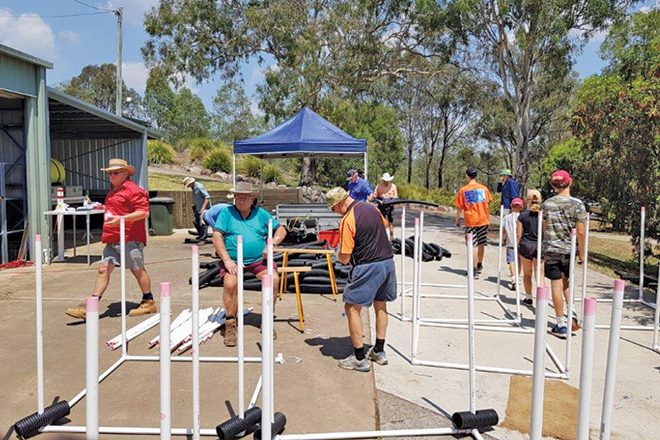So much has happened since the last update on research into habitat enhancement for impoundments, with several projects completed and a new guideline for installing fish attractors in Australia released.
Fish attractors have great potential to improve recreational fishing in Australian impoundments.
While current management relies primarily on stocking and harvest control, there is convincing evidence from the US that strategic fish habitat enhancement is an effective way to improve impoundment fisheries.
A recent Queensland Department of Agriculture and Fisheries led project at Cressbrook Dam was one of the first in Australia to comprehensively investigate habitat enhancement with fish attracting structures to improve recreational fishing in impoundments.
The project evaluated the effectiveness of bottom-mounted FAS constructed from timber and synthetic materials and a novel surface-suspended FAS design.
Volunteers from the Toowoomba and District Fish Stocking Association and the wider community constructed 576 FAS, which were installed across 25 sites at the dam – 182 synthetic spiders, 142 synthetic trees, 130 brush bundles, 44 Georgia cubes, 39 timber cribs, 26 suspended FAS and 13 branch bundles.
Effectiveness of FAS at Cressbrook Dam
Numbers of golden perch and Australian bass increased around all types of FAS at Cressbrook Dam, including consistent use of deep water FAS.
Smaller prey species were also commonly detected around the FAS.
Electrofishing surveys detected the greatest increase at sites with timber FAS, but positive trends were also observed around the synthetic and suspended FAS.
In contrast, the acoustic tracking data revealed higher fish use of synthetic and suspended FAS.
Therefore, no clear preference for any particular type of FAS could be detected.
A creel survey revealed: habitat enhancement
- an improvement in angler attitudes towards fishing at Cressbrook Dam
- an improvement in perceived fishing quality, with higher catch rates and frequency of successful trips reported after FAS were installed
- a three-fold increase in the median visit frequency indicating FAS made the dam more attractive to anglers.
The results from the Cressbrook Dam project support previous observations about FAS installed for barramundi in Kinchant Dam.
They indicate FAS in conjunction with stocking, and harvest restrictions can help fisheries managers improve recreational fishing opportunities and the value of impoundments to local communities.
FAS use in Australia
FAS have potential to help manage where anglers fish and improve access to fisheries resources.
They can be used to create fishing hotspots outside closed zones or near launching points – minimising boat travel distances and improving access for kayak and shore-based anglers, including those with limited mobility.
Most stocked fish species show a high affinity for structural habitat and are expected to respond well to FAS installation.
Some managers may be concerned FAS could increase angler harvest to unsustainable levels.
However, the risk of overharvest is low and manageable, with many anglers now practicing catch and release and recruitment controlled by the number of fingerlings stocked.
Installing FAS in Australia
The FAS examined in this project were modular, relatively lightweight, affordable and easy for community groups such as fishing and stocking clubs to construct and deploy.
The Department of Agriculture and Fisheries has developed a best-practice guideline to help stocking groups and managers of impoundments and fisheries safely and effectively use fish attractors.
This includes:
- a step-by-step process to determine if fish attractors will be useful in an impoundment
- information about planning and approvals
- instructions for FAS construction and deployment
- ways to monitor and evaluate the success of FAS.
More information about the Cressbrook Dam project, including FAS locations and the final report, can be found online.
If you would like to learn more about this project or the Kinchant Dam habitat enhancement project, please contact Fisheries principal scientist Dr Andrew Norris on Andrew.Norris@daf.qld.gov.au or 0429 624 985.
 Bush ‘n Beach Fishing Magazine Location reports & tips for fishing, boating, camping, kayaking, 4WDing in Queensland and Northern NSW
Bush ‘n Beach Fishing Magazine Location reports & tips for fishing, boating, camping, kayaking, 4WDing in Queensland and Northern NSW









